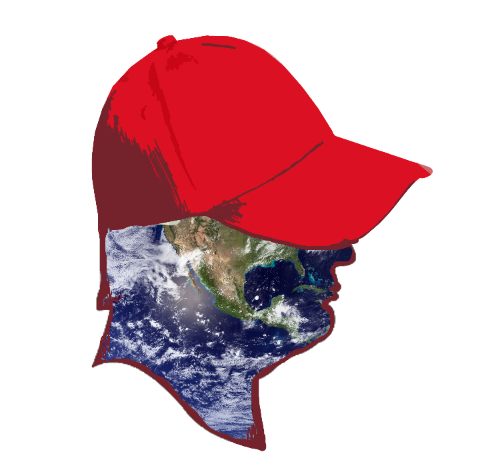Bonus Episode: Guess What Else the Border Wall Keeps Out
This photo shows a Jaguar photographed by a motion-detection camera in the Dos Cabezas Mountains in southern Arizona. The Center for Biological Diversity and U.S. Rep. Raul Grijalva filed what they said is the first federal lawsuit on Wednesday, April 12, 2017, in Tucson against the proposed border wall. Wildlife conservationists said the wall would be detrimental to rare animals such as jaguars and ocelots that are known to traverse the international line. (Bureau of Land Management/U.S. Fish and Wildlife Service via AP, File)
President Trump’s proposed 2,000-mile long, 30-foot high border wall would obstruct more than just a pretty landscape. It could bring an end to the species that live in the lush coastal grasslands, searing hot deserts, and staggering mountain peaks in the path of the wall.
In this episode of Trump on Earth, we team up with a fellow environmental podcast, Generation Anthropocene, as Stanford student Maddy Belin talks with Penn State University Professor Jesse Lasky for their episode entitled “Oh Right, the Animals.”
Penn State Biology Professor Jesse Lasky researches human impacts on biodiversity. In his 2011 study, Lasky speculates that a coast-to-coast border wall would hurt the species depending on cross-border migration. The wall would block the animals’ daily travels to find food and divide populations into smaller ones, limiting their ability to interbreed and spread genetic diversity.
“One major source of genetic diversity is dispersal from other populations. If you stop that, then you likely get decreases in genetic diversity within populations. We're concerned that lower genetic diversity might be a problem for the potential adaptability of a species in response to environmental change, like something like climate change...Some examples of that might be the American black bear, which is pretty widespread in North America, but starts to peter out as you get down to the US-Mexico border,” says Lasky.
The biology professor is also concerned for the future of jaguars and bighorn sheep that frequently cross the border to find food and for any species that may have to migrate northwards as the planet warms to live in the temperatures they’re used to.
But, during George W. Bush’s time in office large sections of a border wall were built. So what make Trump’s proposed wall so different?
“One thing to note is that the kind of project they're talking about now would essentially be an impenetrable wall. All those other things that people usually do usually have some sort of openings and penetrability, but what they're talking about now is a solid concrete wall that's 30-feet tall or something like that, so that really stands out,” says Lasky.
Lasky and Belin address what laws are already in place that should protect our environment from huge infrastructure projects like this and the 2005 Congressional law that Trump can use override all of these regulations. Last month, the Center for Biological Diversity and Representative Raúl M. Grijalva of Arizona filed a federal lawsuit to force an environmental review of the wall.
Mentioned in This Episode:
Research Paper: “Conservation biogeography of the US–Mexico border: a transcontinental risk assessment of barriers to animal dispersal.” By Jesse Lasky, Walter Jetz, and Timothy Keitt.
Podcast: Generation Anthropocene
For Further Study: National Security and Environmental Laws. Written by Hope Babcock.
Lawsuit filed by the Center for Biological Diversity in federal court that threatens to derail the border wall.
This episode was hosted by Reid Frazier. Trump on Earth is produced by The Allegheny Front, a Pittsburgh-based environmental reporting project, and Point Park University's Environmental Journalism program.
Our podcast is free to download, follow and listen, so if you find these episodes informative in a chaotic political environment, please consider donating or leaving a review on iTunes. We are actively listening to our reviewers, and each review helps our environmental message reach more ears.
Questions? Tweet at us on Twitter or send us a message via trumponearth@gmail.com or Facebook.


